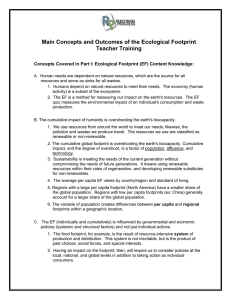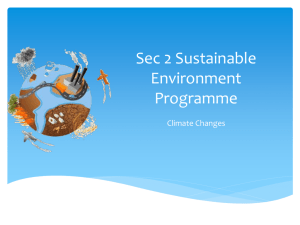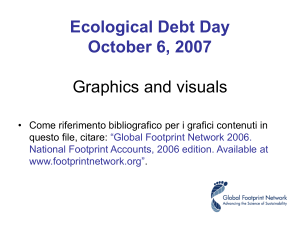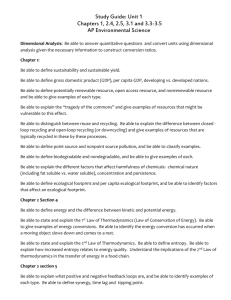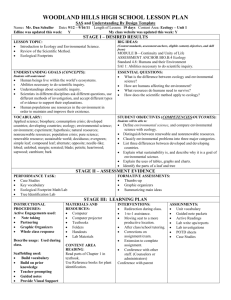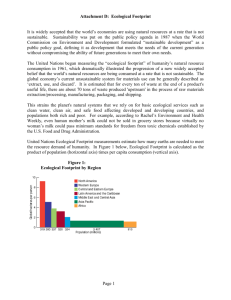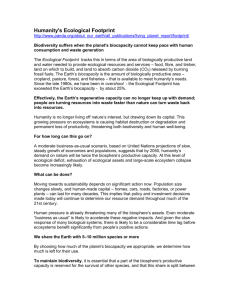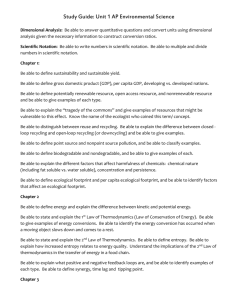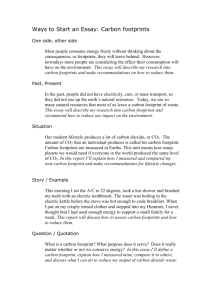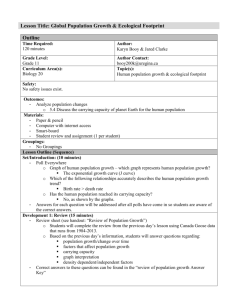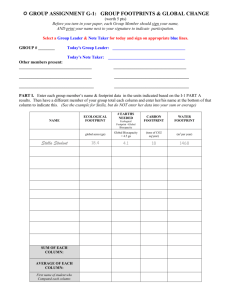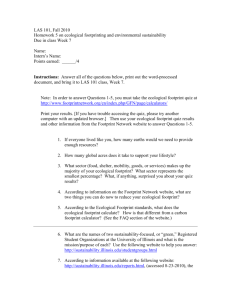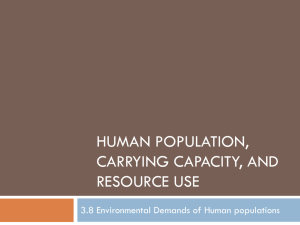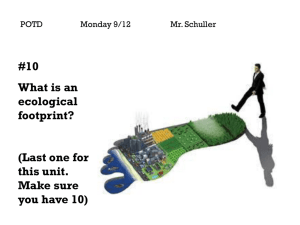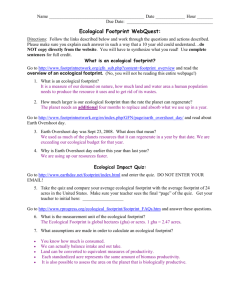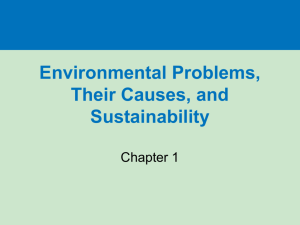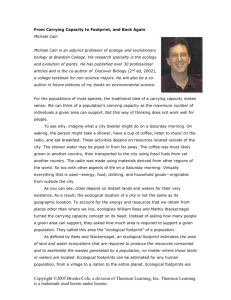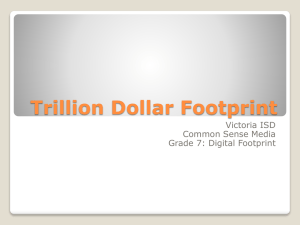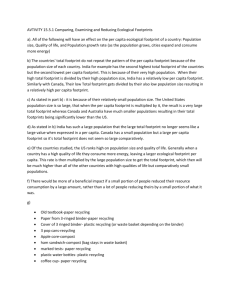Ecological footprint & energy recycling - i
advertisement
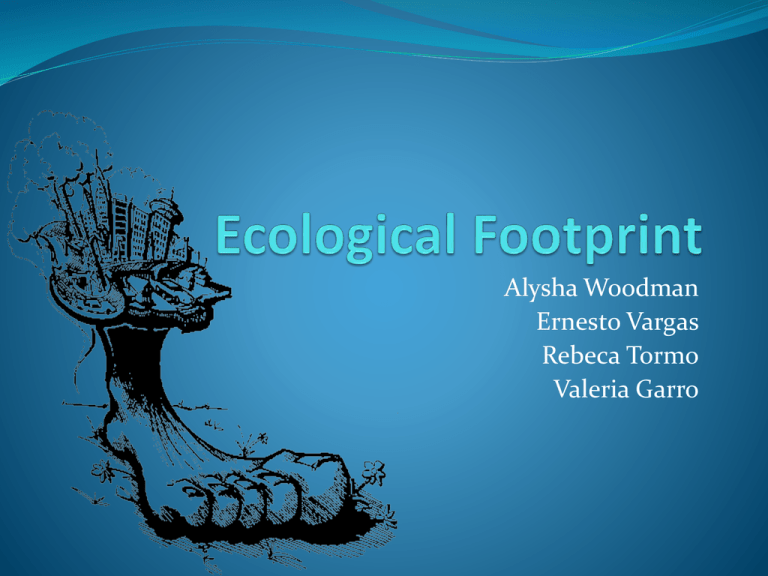
Alysha Woodman Ernesto Vargas Rebeca Tormo Valeria Garro What is it? An area of land (and water) that would be required to sustainably provide for a specific population’s resources and assimilate its wastes It is more about the resources and wastes produced or needed by a population rather than the population that an area can sustain Inverse of carrying capacity Provides a quantitative estimate of human carrying capacity How do countries compare? Country Hectares United States 10.3 Australia 9.0 Canada 7.8 Germany 5.3 United Kingdom 5.2 Switzerland 5.1 China 1.6 India 0.8 Football fields 15 How do countries compare? Countries are either a) Ecological debtors Larger footprints Changing sizes of the countries in proportion Could be harvesting resources unsustainably, importing goods or exporting wastes b) Ecological creditors Smaller footprints than biocapacity Biocapacity: living capacity or natural resources Depends on… Population size (how many people and how much land each one uses) Consumption per capita Calculating ecological footprints Convert various kinds of consumption and waste production into a land area needed to produce or service it. 4 main areas: 1. Fossil fuels and energy consumption 2. Food land 3. Forest products 4. Land required for towns, roads and factories(consumed land) Formulae Websites take these formulas into account to calculate each person’s footprint. 1. Energy land: fuel used in gigajoules/population X energy area (y ha/cap) 2. Food land: area of cropland and pasture/population (w ha/cap) 3. Forest land: wood products (mass or volume)/population X productivity (z ha/cap) 4. Consumed land: area of consumed land/population (x ha/cap) How useful is it? Indicator of sustainability Conceptual simplicity Clear indicator of progress towards sustainability Clear indicator of resource injustice National footprint comparisons Limitations Average, therefore it doesn’t show whether there are areas dense in waste or resources or completely virginal natural areas Does not capture other environmental strains for example, once the resources are used they may not be reused for a while (systematic degradation of ecological productivity) Ignores the effects of toxic or air pollution They fail to capture the erosion of earth carrying capacity, which is a basis of sustainability Recycling At home and at work: Classify everything you have in separate bins Paper/cardboard Plastic Glass Aluminum Find out about recycling programs near where you live or work Leave you bins in the appropriate area so that it can be collected properly Resource conservation What YOU can do: Water your lawn with a water hose instead of water sprinklers, they spray water not needed by the plants Participate in community recycling programs Buy products manufactured with recycled materials Reuse bottles and paper as much as possible Say no to plastic bags in the supermarket Do not buy/use products containing CFC’s A country: Limit the amount of pollution and carbon emissions in factories Limit the amount of fishing and hunting a person can do National parks and reserves, wildlife refugees Promote the sell of environmental friendly products (grant subsidies to companies) Organize recycling programs Establish laws protecting the environment and for conserving resources Make ecological limits central to decision-making Calculate your own footprint! Footprint Calculator http://www.footprintnetwork.org/en/index.php/GFN/ page/calculators/ Thank you!
